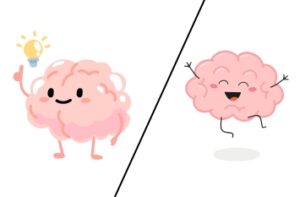
When Should You See a Psychiatrist? 7 Signs It’s Time to Seek Help
When Should You See a Psychiatrist? 7 Signs It’s Time to Seek Help Mental health is just as critical as physical health, yet many people

Antipsychotics and mood stabilizers are both types of psychiatric medications used to treat mental health conditions. Antipsychotics are primarily used to manage symptoms of psychosis, such as hallucinations and delusions, often associated with schizophrenia and bipolar disorder. On the other hand, mood stabilizers are used to stabilize mood swings, particularly in conditions like bipolar disorder.
While both types of medications can be effective, it’s essential to understand their differences and potential risks. Antipsychotic medications, although effective, can have more severe side effects compared to mood stabilizers. It’s crucial to weigh the benefits against the potential risks when considering treatment options.
Antipsychotics are a class of psychiatric medications primarily used to manage symptoms of psychosis. These symptoms can include hallucinations, delusions, and disorganized thinking, often associated with conditions like schizophrenia and bipolar disorder. Antipsychotics work by blocking the activity of dopamine receptors in the brain, helping to alleviate these symptoms.
There are two main types of antipsychotics: typical (first-generation) and atypical (second-generation). Typical antipsychotics, such as haloperidol and chlorpromazine, tend to have more severe side effects, including movement disorders like tardive dyskinesia.
Atypical antipsychotics, such as risperidone, quetiapine, and olanzapine, are newer medications that often have fewer side effects, although they may still cause weight gain, metabolic issues, and increased risk of diabetes.
Antipsychotic medications are commonly used to treat a range of mental health conditions, including:
It’s important to note that while antipsychotics can be highly effective in managing these conditions, they also come with potential side effects that should be carefully considered and monitored by a healthcare professional.
Mood stabilizers are a class of psychiatric medications primarily used to treat mood disorders, particularly bipolar disorder. Unlike antidepressants, which may trigger manic episodes in individuals with bipolar disorder, mood stabilizers help regulate mood swings without inducing mania.
These medications are also sometimes used to treat other conditions, such as schizoaffective disorder and certain types of epilepsy. Common mood stabilizers include lithium, valproate (valproic acid), carbamazepine, and lamotrigine. These medications work by stabilizing the abnormal electrical activity in the brain that contributes to mood swings.
While mood stabilizers can be highly effective in managing bipolar disorder, they also come with potential side effects that should be carefully monitored by a healthcare professional.
Mood stabilizers are primarily used to treat mood disorders, with the most common uses including:
It’s important to note that while mood stabilizers can be highly effective in managing these conditions, they also come with potential side effects that should be carefully monitored by a healthcare professional.
Antipsychotics primarily work by blocking dopamine receptors in the brain, helping to reduce symptoms of psychosis, such as hallucinations and delusions. On the other hand, mood stabilizers work by stabilizing abnormal electrical activity in the brain, helping to regulate mood swings.
Antipsychotics are primarily used to treat conditions such as schizophrenia, bipolar disorder, psychotic depression, and severe agitation. Mood stabilizers, on the other hand, are mainly used to treat bipolar disorder, although they may also be used in conditions such as schizoaffective disorder and certain types of epilepsy.
Common side effects of antipsychotics include weight gain, metabolic issues, sedation, and an increased risk of diabetes. Long-term use of antipsychotics may also lead to movement disorders such as tardive dyskinesia.
For example, common side effects of mood stabilizers include weight gain, gastrointestinal issues, and tremors. Long-term use of mood stabilizers may also be associated with thyroid and kidney problems.
Feature | Mood stabilizers | Antipsychotics |
Main use | Bipolar disorder, mood swings | Schizophrenia, psychosis, bipolar disorder (manic or psychotic episodes) |
How they work | Regulate neurotransmitters | Block dopamine and serotonin receptors |
Examples | Lithium, lamotrigine, valproic acid, carbamazepine | Olanzapine (Zyprexa), risperdal (Risperdal), aripiprazole (Abilify), quetiapine (Seroquel) |
When it comes to choosing between antipsychotics and mood stabilizers, several factors need to be considered. The primary condition being treated, the severity of symptoms, and the individual’s medical history all play crucial roles in determining the most suitable medication.
For conditions such as schizophrenia and severe agitation, antipsychotics may be the preferred choice, as they are specifically designed to target symptoms of psychosis.
On the other hand, for individuals with bipolar disorder experiencing mood swings, mood stabilizers may be more appropriate. It’s essential to work closely with a healthcare provider to weigh the benefits and potential risks of each medication and to tailor treatment to the individual’s specific needs and circumstances.
Both antipsychotics and mood stabilizers play vital roles in the treatment of various mental health conditions, including schizophrenia, bipolar disorder, and psychotic depression. While antipsychotics primarily target symptoms of psychosis, mood stabilizers focus on regulating mood swings. Understanding the key differences, including mechanisms of action, indications, and potential side effects, is crucial when making treatment decisions.
Ultimately, the choice between antipsychotics and mood stabilizers should be made in consultation with a healthcare provider, taking into account the individual’s specific needs and medical history.

When Should You See a Psychiatrist? 7 Signs It’s Time to Seek Help Mental health is just as critical as physical health, yet many people

Understanding Shower Avoidance Syndrome: Causes, Symptoms, and Treatment Options Shower Avoidance Syndrome, also known as SAS, is a psychological condition characterized by a persistent aversion

Understanding Long-Acting Injectables (LAIs) in Psychiatry: Benefits and Applications Managing mental health conditions such as schizophrenia, bipolar disorder, or severe depression often requires a consistent
